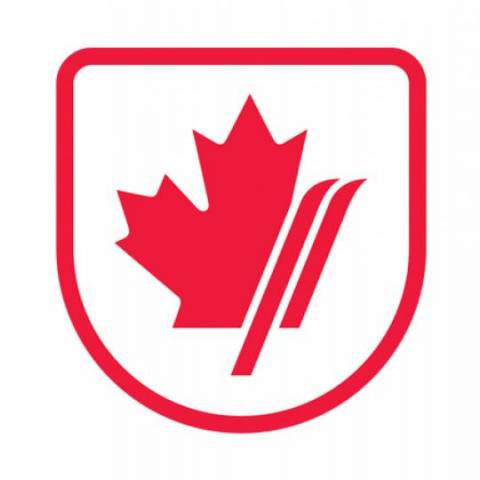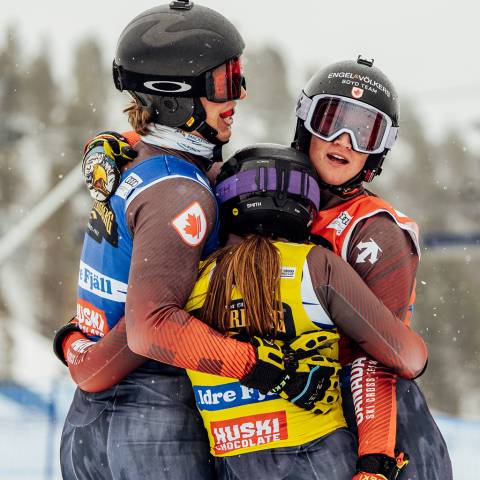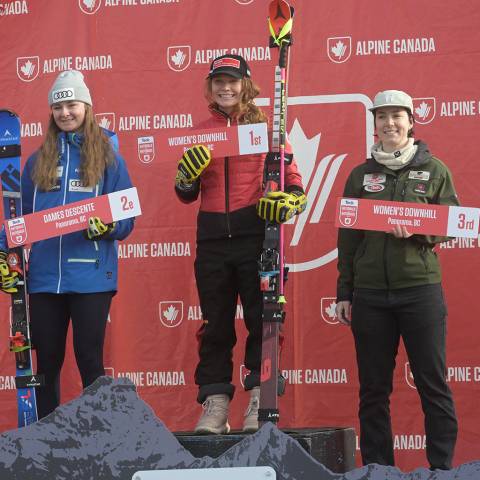The action-packed and adrenaline-fueled sport made its Olympic debut as a medal sport at the 2010 Winter Games in Vancouver-Whistler. Prior to the Olympics, ski cross had already established itself as a hugely popular TV sport thanks to events such as the X-Games.
While Ski Cross is still young, Canada has a rich history of success in the sport. Since 2009, Canada has been viewed as one of the strongest Ski Cross nations in the world, racking up 137 World Cup medals, 6 World Championship Medals, 15 X-Games Medals and 3 Olympics medals.
Ski cross courses have both naturally occurring terrain and artificial features. Course building is a type of art and always keeps the athletes on their toes. World Cup courses typically feature a combination of big jumps, small jumps, rollers and bank turns. In 2015 FIS also introduced a sprint race format, which is a short course offering multiple jump/roller lines for athletes to choose from.
Aside from the course, what sets ski cross apart from other sports, including alpine skiing, is the fact that there’s more than one skier racing down the course. Four to six racers go head to head, at the same time, with the aim of finishing first.
The unique combination of technically-challenging terrain and head to head racing make ski cross a thrilling spectator sport.
FORMAT
In World Cup, World Championship and Olympic races, athletes complete a qualification round that is run as a time trial, with racers skiing the course solo. Based on their qualification time, athletes are placed into brackets for heat racing. In heats, four athletes race head to head down the course, with the top two from each heat advancing to the next round. Finals consist of a small final, with athletes competing for places 5 to 8 and a big final which determines the winner of the race, following by 2nd, 3rd & 4th. At the Winter X Games – one of the sport’s biggest events – six skiers compete head to head instead of four.
STAR POWER
Canada has some of the sport’s biggest stars and continues to develop athletes who are able to compete with the best in the world. Leading the team on the men’s side is Brady Leman. Leman is the reigning Olympic Champion and the 2016 X-Games Champion. Brady also claimed silver at the 2019 World Championships and has 26 World Cup podiums to his name. On the women’s side, Marielle Thompson leads the pack as the 2019 World Champion, 2014 Olympic Champion, three individual World Cup Crystal Globes, and an impressive 36 World Cup podiums - 21 of which are wins. Alpine cross-over athletes Brittany Phelan & Kevin Drury have also made a name for themselves on the World Cup circuit. Phelan claimed Olympic silver in 2018 and already has five World Cup medals to her name. Kevin Drury finished third and claimed a bronze medal at the 2019 World Championships. He has also claimed four World Cup medals in his career. Canada also has a number of up-and-coming racers making a name for themselves on the world cup circuit, including, India Sherret, Abby McEwen, Tiana Gairns & Reece Howden. Watch for them to follow in the footsteps of Canada’s greats and continue the keep Canada as one the top ski cross nations in the world.












